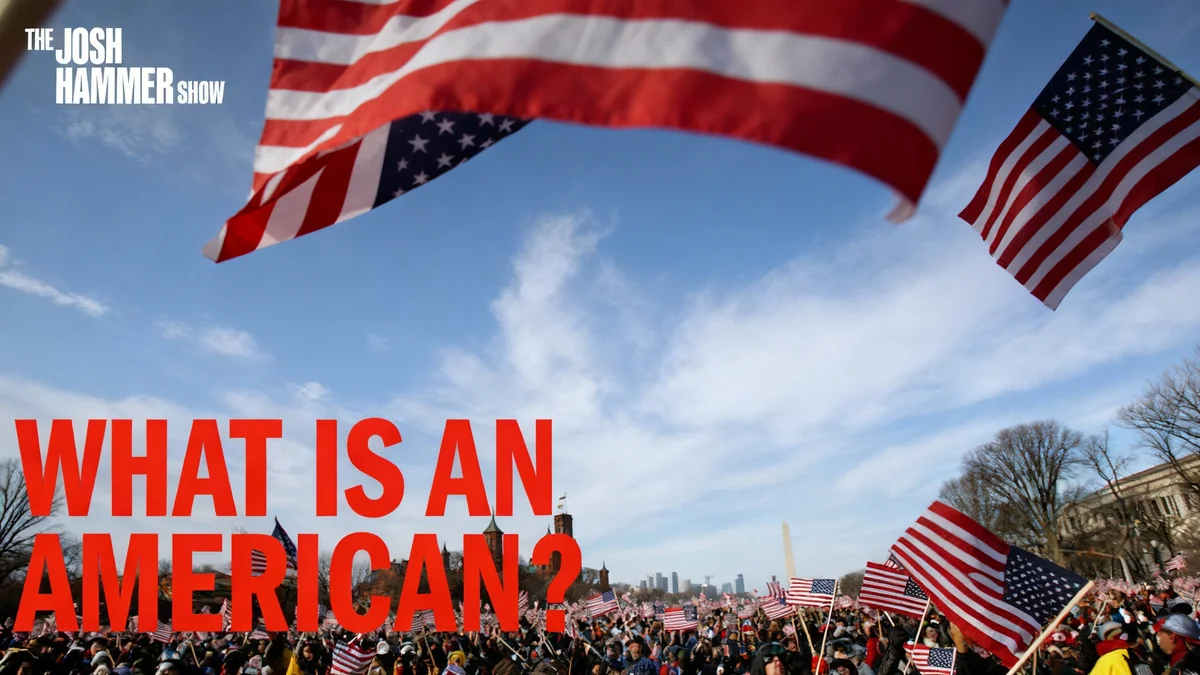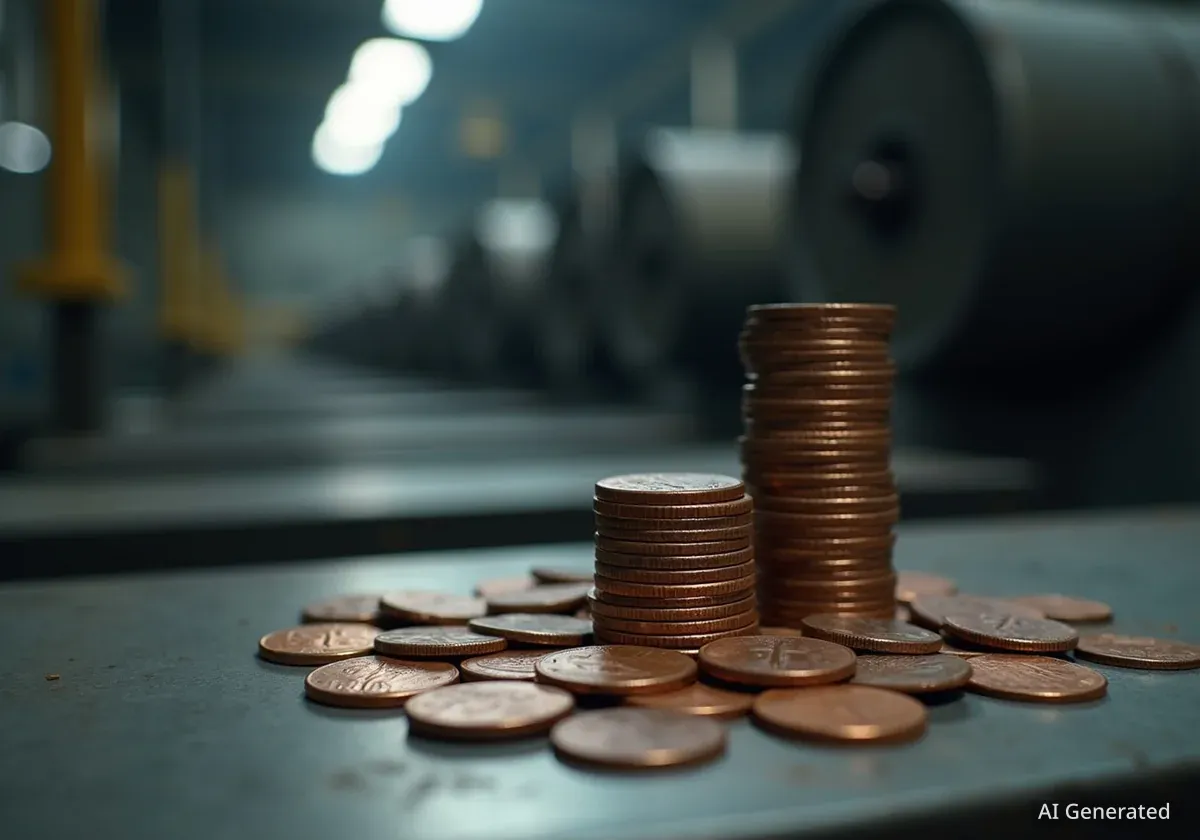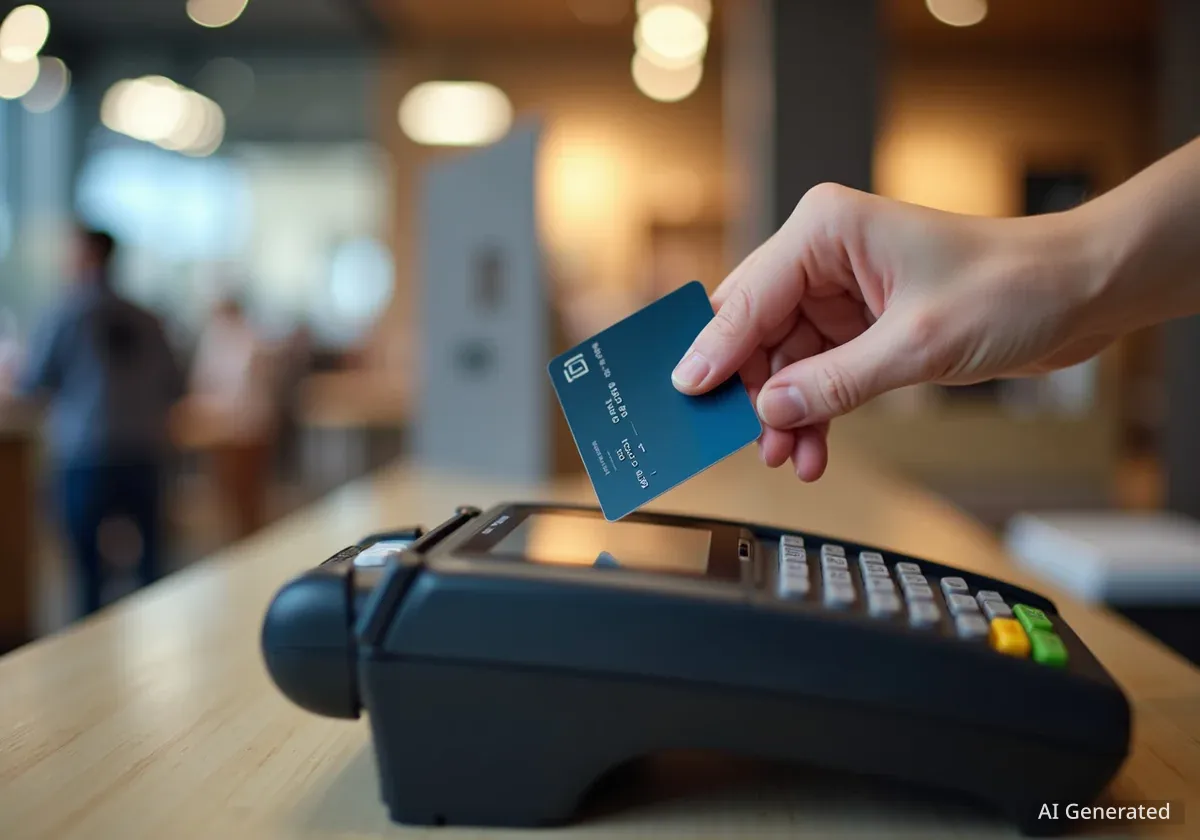The British Pound Sterling (GBP) experienced a significant decline against the US Dollar (USD) on Thursday, falling by more than 0.5%. This drop pushed the GBP/USD exchange rate below the key 1.3600 level following the Bank of England's decision to maintain its current interest rates.
The central bank's Monetary Policy Committee voted 7-to-2 to hold rates, a move that comes amid persistent inflation and concerns about slowing economic growth in the United Kingdom. Broader market unease also contributed to the US Dollar's strength, adding further pressure on the Pound.
Key Takeaways
- The Bank of England held interest rates steady following a 7-to-2 vote by its policy committee.
- The Pound Sterling fell over 0.5% against the US Dollar, dropping below the 1.3600 mark.
- The UK economy faces dual pressures from high inflation and slowing economic activity.
- Market participants are now looking ahead to the release of UK Retail Sales data for August.
Bank of England's Decision Sparks Market Reaction
The primary driver for the Pound's decline was the Bank of England's (BoE) announcement to keep its main interest rate unchanged. The decision, while anticipated by some, highlighted the central bank's cautious approach in a complex economic environment. The 7-to-2 split in the vote indicates a degree of dissent among policymakers, suggesting differing views on how to best manage the UK's economic challenges.
Immediately following the announcement, the GBP/USD pair, often referred to as 'Cable' by traders, saw a sharp downward movement. The currency pair dropped from its position above 1.3600, a level often watched by market analysts as a significant psychological and technical benchmark. The move was amplified by a general strengthening of the US Dollar across global markets, as investors sought safer assets amid growing uncertainty.
The Role of the Bank of England
The Bank of England's main goal is to maintain price stability, which it defines as keeping the inflation rate at approximately 2%. Its primary tool for this is adjusting interest rates. When inflation is high, the BoE typically raises rates to make borrowing more expensive, which cools down the economy. Conversely, it may lower rates to stimulate growth when inflation is too low.
UK Economy Grapples with Inflation and Growth Fears
The BoE's decision comes as the UK navigates a difficult economic landscape. Persistent high inflation remains a primary concern, eroding the purchasing power of consumers and complicating business operations. At the same time, there are increasing signs that economic activity is slowing down, creating a challenging scenario for policymakers.
This combination of high inflation and sluggish growth limits the BoE's policy options. Raising interest rates aggressively to combat inflation could risk further slowing down the economy. However, keeping rates low could allow inflation to remain elevated for longer. This balancing act is central to the bank's current strategy.
What is the Pound Sterling?
The Pound Sterling (GBP) is the official currency of the United Kingdom and is the oldest currency still in use, with origins dating back to 886 AD. According to 2022 data, it is the fourth most traded currency in the foreign exchange market, involved in about 12% of all daily transactions.
Focus Turns to Upcoming Retail Sales Data
With the interest rate decision now past, investors and economists are turning their attention to the upcoming UK Retail Sales figures for August, scheduled for release on Friday. This data is typically viewed as a key indicator of consumer confidence and spending, which are crucial components of the UK's domestic economy.
However, analysts are approaching this release with caution. In the current high-inflation environment, the headline retail sales number can be misleading. The data measures the total value of sales, not the volume of goods sold. This means an increase in the figure could simply reflect consumers paying higher prices for the same amount of goods, rather than an actual increase in economic activity.
Interpreting the Sales Figures
A strong headline number might not necessarily be positive for the Pound. It is essential to differentiate between consumers spending more due to wage growth and economic optimism, versus consumers struggling to afford basic goods as prices rise. A detailed analysis of the report will be necessary to understand the true state of consumer health in the UK.
"Functionally, Retail Sales data cannot differentiate between consumers struggling to pay for the same amount of goods with a larger proportion of their paycheque, and consumers properly injecting wage gains into the domestic economy."
Broader Factors Influencing the Pound
Beyond domestic data, several other factors influence the value of the Pound Sterling. The currency's performance is closely tied to the overall health of the UK economy, which is measured by indicators like Gross Domestic Product (GDP), employment figures, and manufacturing surveys.
- Economic Health: A strong economy generally attracts foreign investment, which can strengthen the Pound. Weak economic data often has the opposite effect.
- Monetary Policy: As seen this week, the BoE's interest rate decisions are a primary driver. Higher rates tend to make a currency more attractive to investors seeking better returns.
- Trade Balance: The UK's trade balance, which measures the difference between exports and imports, also plays a role. Strong demand for UK exports increases demand for the Pound, supporting its value.
The recent dip in GBP/USD reflects the complex interplay of these factors. The BoE's steady hand on rates, combined with a challenging domestic economic picture and a strong US Dollar, has created downward pressure on the British currency. Future movements will depend on incoming data and the central bank's evolving response to inflation and growth.





